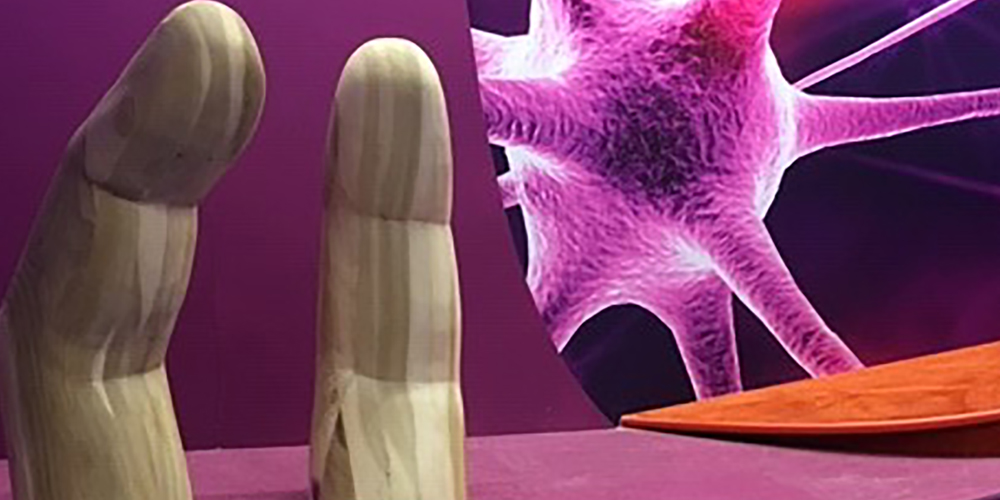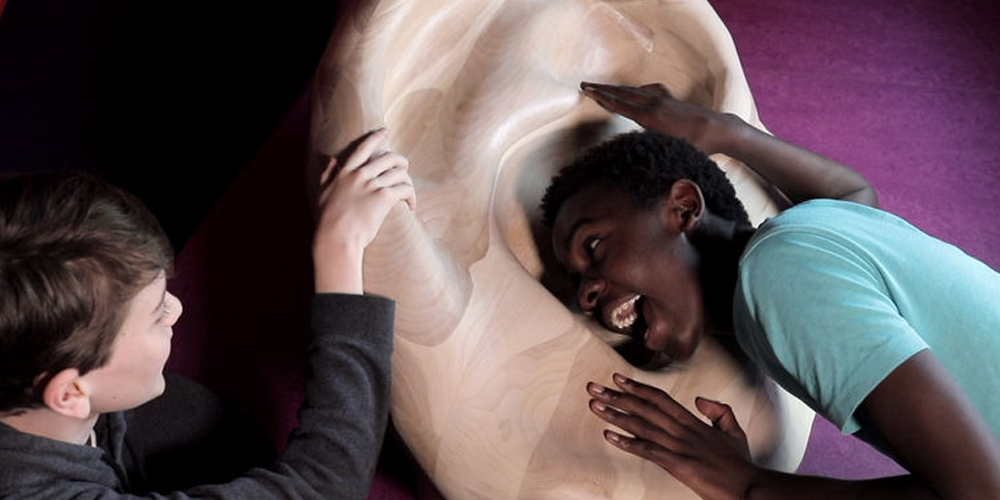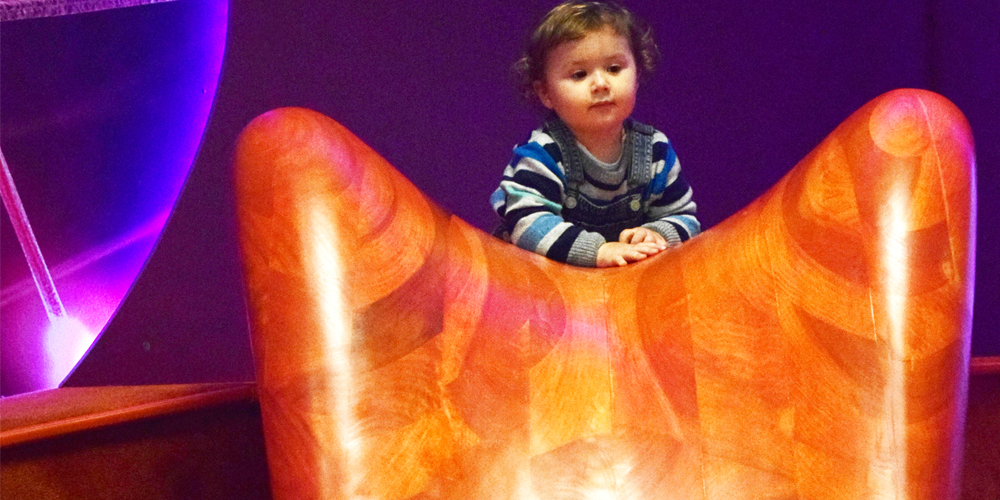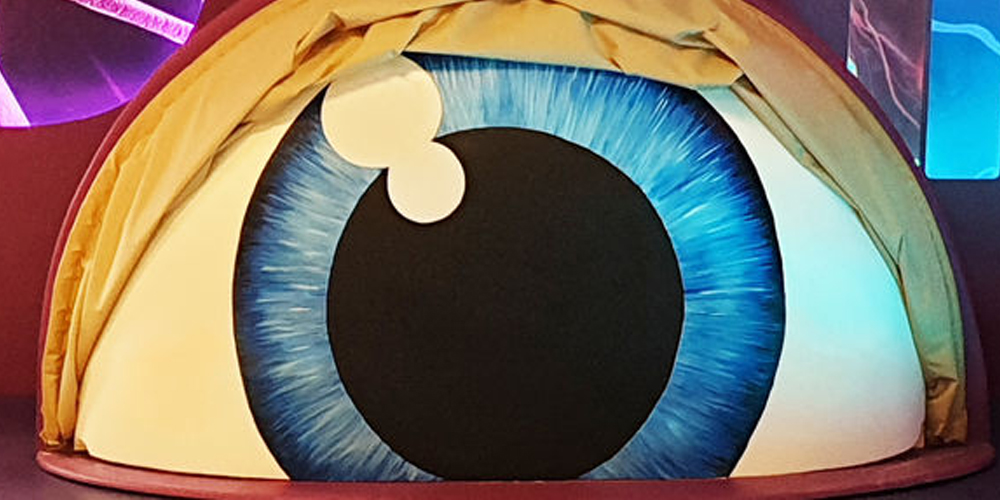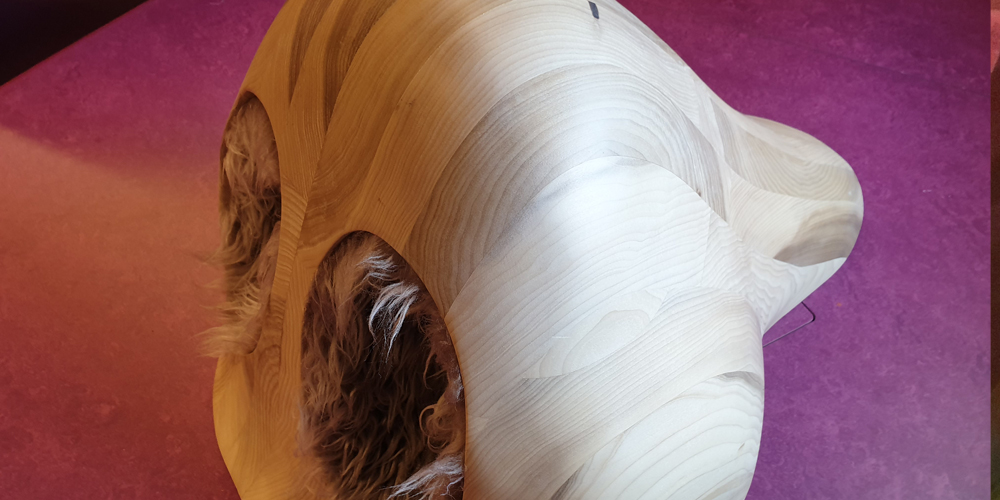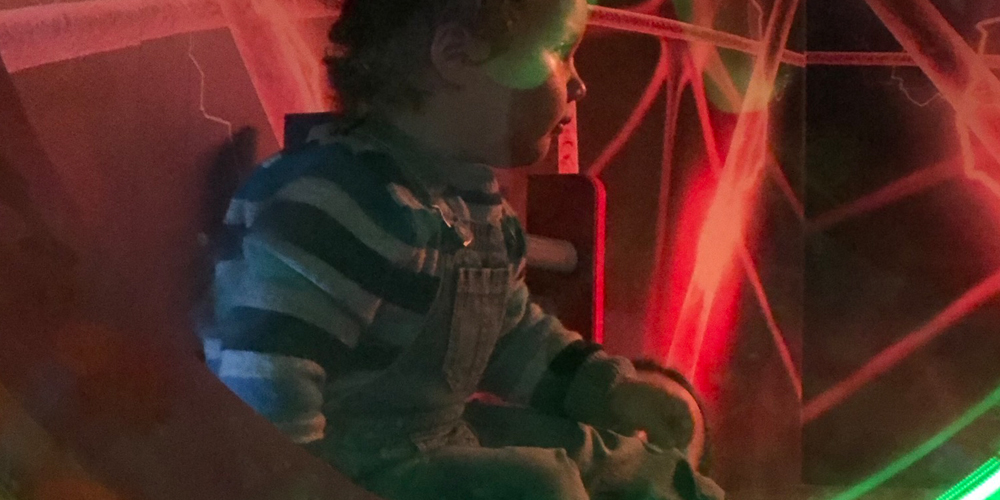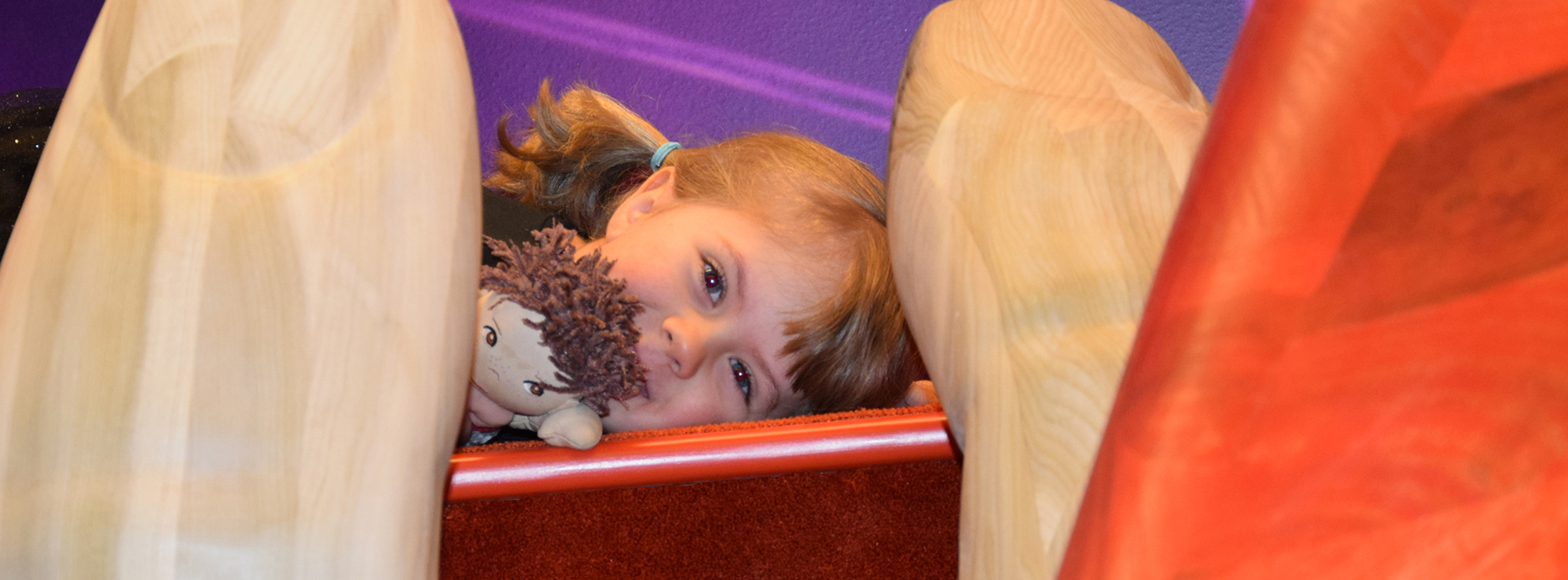
The Children's Room - the brain room
An experience where sensory play inspires curiosity and learning
The primary target group of the Children’s Room is 0-4 year old and their parents but it may also be used as a brain room for school excursions, events and study visits.
When children step into the brain room they are greeted by a colorful experience that, together with a harmonious sound image, aims to encourage curiosity, joy of discovery, creativity and movement, but also rest. They have the opportunity to explore the brain’s functions, climb among neurons, feed the brain, rest in a synapse and play together under an eyelid.
A story and songbook that summarizes the content and message of the exhibition has been produced to enable children and parents to take their experiences home with them, to reflect and continue to be inspired.
The exhibition is specifically developed for families with small children and has easy access for visitors with prams and wheelchairs. The experiences have clear educational components developed to inspire curiosity and learning. The exhibition is developed in collaboration with researchers at Lund University and studies on the learning process and cognitive development (our mental processes or our thinking) in children.
The Children’s Room – The Brain Room is developed and built by designer and scenographer Rigmor Grönwall and educator Stefan Zamudio, in collaboration with the workshop at the Department of Design Sciences, Lund University, Elinstallationer and Bröderna Persson. The exhibition/experiences were carried out and built with the support of Sparbanken Skåne, Kraftringen and Canon & Axis.
The brain, our senses and the synapse
Most new-borns can use all five of their senses immediately after birth. Some senses are fully developed, while others need some time to get used to all the impressions. Smell (the nose) and taste (the mouth and tongue) work well from birth. Touch (the fingers and room) is fully developed at birth and the new-born can, for example, feel touch completely. Their ability to feel heat, cold and pain is fully developed. Of all the senses, hearing (the ear) is the most developed and sight (the eye) the least developed in new-borns, however, sight develops quickly and already in the first few months most children can track an object with a steadier gaze and also make eye contact. Sourse: The Swedish Healthcare Guide – about infant development 0-6 months. Vårdguiden (in Swedish, new tab).
The network of nerves in our body makes it possible for us to react if something happens (synapse*). The nerves send signals from our sensory organs, nose, mouth/tongue, skin, ears and eyes. Every second your brain (the brain office) receives information from both the inside and outside of your body, even when you are asleep. It analyses information, decides what is to be done and sends instructions for the body to follow.
With ladders in the form of DNA strands, a slide down the tongue and different materials along the walls and floor, the smallest children can move, feel, look and listen in this exciting exhibition. With the Children’s Room we want to highlight the importance of the brain’s basic needs – food, exercise and recovery – as well as encourage curiosity. The experiences are reinforced with puzzles and interactive activities linked to the theme.
In the Eyelid, the Synapsis Swing and the Brain Office we have created possibilities for rest and recovery.
* Synapse = junction where a nerve impulse is transferred from a neuron to another cell. (NE.se) (in Swedish, new tab).
Our sensory impressions
To be able to understand our children we must also understand how they experience the world and it is not always in the same way as adults. Our sensory impressions are, together with motivation, interest and the brain’s development, the basis for our perception, our interpretation of the world around us. How our children feel, how they behave and how we should treat them is therefore to a certain extent affected by how well their senses work.
Touch
Touch is a sense that is already well developed at birth. Touch offers the child much-needed safety. Particularly a sense of touch in the mouth develops early in infants and they often place things in the mouth to explore them before knowing what it is they are holding in their hands.
Vision
What an infant sees is not only about how well developed the sense is but also how the child has learnt to interpret what they see. You can look at the same object from different perspectives and angles, the object becomes smaller if it is far away and looks different in different light conditions. The infant must learn to ignore that which is unimportant and see the object’s general characteristics in order to have usable sight. The child therefore needs experiences to be able to use the sense of sight in a good way.
Infants have quite limited sight, however, they can still use this sense and sight helps them both to explore the world and to survive in it. They see major contours and contrasts. They have an ability to react by raising their arms to protect themselves if it looks like a block is getting closer. Already at two months of age, their colour vision is as developed as it is in an adult and by around three months babies have a degree of depth perception that helps them, for example, to avoid crawling over a ledge.
Hearing
Infants are able to recognize sounds, hear differences in tone and locate sound sources just days after birth. Their hearing is particularly sensitive to sounds in the frequency range 250-400 Hz, which is the main area for human speech and they prefer speech to other sounds. What they like best of all is the infant-directed speech that people often use without even thinking about it when talking to infants. They use clearer intonation, talk more rhythmically and use a slightly higher-pitched voice. All of this is good for the child’s language development. Clearer intonation makes it easier for the infant to imitate the sound. The tone and rhythm of the speech provides clues for the infant about the emotional content of what we are saying, if we are talking about something that makes us happy or something that makes us sad. Language also sticks with the infant while other equally common sounds are ignored as the infant is drawn to the more rhythmic sound.
Taste and smell
The sense of taste and smell develops early in infants and we are born with certain preferences for sweet and mild flavours/smells, which is important during the first months of an infant’s life. Subsequently, experiences and curiosity about new things become more important with regard to what the infant prefers to eat.
Smell and taste are closely linked and are also used by infants in other situations. Early on, infants recognise familiar smells such as the scent of their parents.
Source: Easy to Learn (The information can be found on the Swedish page Lätt att lära and has been translated).

